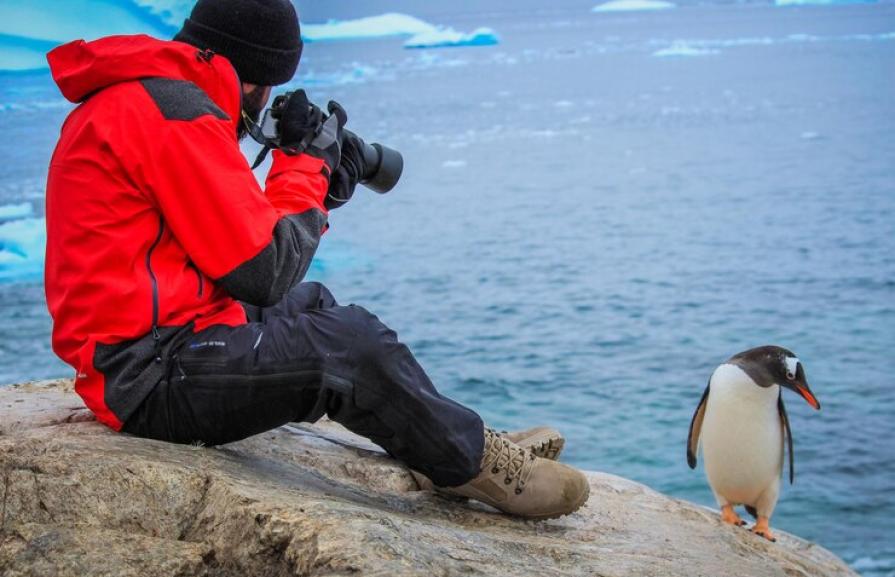Antarctica is one of the most desolate and hard-to-reach regions of our planet. This continent is located in the Antarctic Circle and is surrounded by an ice shelf, which makes it extremely cold and unsuitable for life: the temperature here can drop below -80 degrees Celsius, which is twice as cold as in the Arctic.
Weather conditions
Antarctica is a unique continent, radically different from all other places on Earth: it is the coldest, driest and windiest, widely known for its extreme climate. The main part of Antarctica is covered by a thick layer of glaciers, which contain from 60% to 80% of the planet's fresh water reserves. These huge masses of ice have been forming over millions of years and are now having a major impact on the global climate. If all this ice were to melt, global sea levels would rise by as much as 60 meters, with catastrophic consequences for coastal cities and ecosystems around the world.
The Antarctic climate is characterized by significant seasonal variations. Summer here, which begins in December and ends in February, is characterized by relatively mild (so to speak) temperatures, reaching −30 C, but in winter, from June to August, the thermometer can drop to −60 C and below. The coast of the continent has a more temperate climate: temperatures here in the winter months vary from −35 to −8 C, and in summer they can rise to relatively warm 0-5 C. Due to these milder conditions, many scientific stations have been located on the coast, where scientists can conduct their research all year round.

Tourism in Antarctica is concentrated during the summer season, which lasts from October to March. At this time of year, the Antarctic fauna begins to be particularly active: birds, including the famous Antarctic penguins, begin to nest, and even huge whales return to the shores to feed, creating a spectacular spectacle for the few visitors to Antarctica.
Researchers from all over the world continue to study this amazing continent, discovering more and more of its secrets that can help understand global climate processes and ecosystems of the Earth.
What to do in Antarctica?
See the Drake Passage
The Drake Passage is a narrow passage that separates South America from Antarctica and connects the southern parts of the Pacific and Atlantic oceans. Its width is about 800 km, and the most powerful ocean currents pass through this narrow "corridor". The Drake Passage is one of the most turbulent places in the ocean world: moisture raised from the ocean collides with the cold air of Antarctica, causing frequent and powerful storms that generate 15-meter waves. Due to the harsh weather conditions and numerous icebergs, this place has become a killing zone for many ships throughout the history of navigation.
Touch the eternal ice

The glaciers of Antarctica are colossal masses of ice cliffs that are so high that they can easily be compared to high-rise buildings. Glaciers are one of the most ancient elemental formations on Earth - they have existed for millions of years, arose long before the appearance of the first people. During tourist expeditions, you can be offered kayaking among icebergs - this is a unique chance to feel part of this ancient icy land and feel the scale of the natural phenomenon. But at the same time, it is important to remember the danger of approaching ice walls, as pieces of ice can unexpectedly break off and fall into the water at the most inopportune moment.
Meet penguins and whales
The fauna of the Antarctic leaves an unforgettable impression. During the voyage, ships are often accompanied by whales and killer whales, which eagerly explore the ship and its passengers (thank God, only from the outside!). When disembarking, on the shore, you will be able to walk among the colonies of penguins, observing their daily life. Please note that there are strict rules about being in the Antarctic wilderness, and one of them is not to come closer than 5 meters to penguins so as not to disturb their natural habitat. However, the penguins themselves, being very curious birds, can approach you, which creates absolutely touching and unique moments!

Ways to get to the mainland
Tourist ships bound for Antarctica predominantly depart from two key ports: Ushuaia in Argentina and Punta Arenas in Chile. These cities are located about 800-900 kilometers from Antarctica. A flight from Europe to South America takes about 14 hours, and from Moscow, with transfers, about a day. The most popular routes include a flight to Buenos Aires, the capital of Argentina, followed by a domestic flight to Ushuaia, or a flight to Santiago, the capital of Chile, and on to Punta Arenas.
You can get from Ushuaia to Punta Arenas by bus and the journey takes about 12 hours.
A typical cruise to Antarctica lasts 9-10 days, half of which goes through the famous Drake Passage. Sometimes you can find last-minute tours with discounts of up to 50%, but for this you need to be in Ushuaia to quickly book a tour.

There are also combined tours - with a flight from Punta Arenas to King George Island, and then a cruise on a ship. Such tours cost almost twice as much as regular ones, but the demand for them is high, and places sell out quickly. As an example, one of the companies offering such tours is Antarctica 21.
An interesting way to get to Antarctica is to get a job at a research station or a specialized ship. There are quite a lot of vacancies: from scientific research and equipment maintenance to ensuring the life of the station.
What to put in your luggage?
Winter clothes

Antarctica is famous for its unpredictable weather, and this necessitates appropriate protective clothing. The main requirements include:
- Waterproof and windproof. These properties are indispensable, since in conditions of sudden changes in weather, you can be caught by both snow and strong winds.
- Insulation. Temperatures can drop significantly in winter in Antarctica, so an insulated jumpsuit will be your best friend.
- Thermal underwear. It not only warms, but also wicks moisture away from the body, preventing hypothermia.
- Accessories: gloves, a hat and several pairs of warm socks. Take a few copies for replacement, spare items can become vital.
- Splash protection. When disembarking from inflatable boats, you are sure to encounter splashes of water, so waterproof clothing is a must.
Binoculars
Binoculars will be your faithful companion for observing the Antarctic landscapes from the deck of a ship6 you will be able to admire majestic glaciers, observe islands and marine animals such as whales and seals, and binoculars will allow you not to miss a single detail.
Camera
For photographing unique Antarctic landscapes and animals, a DSLR camera with a large lens is the best choice. A smartphone, unfortunately, is not always able to capture the small details and beauty of these places to the fullest.

Sunglasses
The sun in Antarctica is extremely bright due to the peculiarities of the ozone layer, snow and ice reflect the sun's rays, creating a seriously blinding effect. Sunglasses of a high category of protection will become indispensable in clear weather.
Cure for seasickness
Crossing the Drake Passage is "famous" for its strong pitching. Even if you do not usually suffer from seasickness, it is worth playing it safe and taking the appropriate medications with you.
Entertainment
Time on the ship can feel rubbery, especially during periods without active events. Books, music, and movies on your laptop will help you pass the hours and make your trip more enjoyable. Keep in mind that affordable WiFi is hardly worth waiting for!

Cash
There may be souvenir shops, buffets, bars, laundries, and even hairdressers on board the ship. Keep in mind that many of these services only accept cash, so stock up on it in advance.
Offline map
A Maps.me-type app should be downloaded to your phone in advance: it will help you navigate the area even without access to a mobile network or the Internet, which is often the case in remote places.
Traveling to Antarctica is more than just a trip, it's a real life-changing adventure! Those who have been to Antarctica often say that this trip is unforgettable and leaves a lasting impression. Majestic ice panoramas, unique nature and polar animals - all this creates a unique feeling of the greatness of nature. Perhaps that is why many, having visited Antarctica once, dream of returning here again.









